MISCELLANEOUS VIDEOS
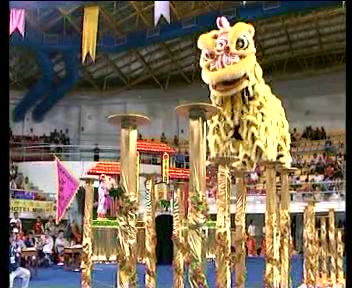
Lion Dance
Forgetting that kungfu is a martial art meant for real fighting, many people confuse it with a martial sport like Taekwondo and Wrestling where participants are protected by safety rules.
In Taekwondo, for example, one is not allowed to catch an opponent's leg to fracture it; in Wrestling one is not allowed to gore out an opponent's eyes. A kungfu cultivator may not want to execute such drastic attacks, but he must not forget that his opponent may do so on him. Hence he is trained to prevent such attacks.
Some video clips showing fighting scenes highlight the stark reality, and sometimes brutality, of a fighting art. But a high-level kungfu practitioner needs not, and should not, be brutal, even when his opponents are. This is possible through internal cultivation, which not only enhances his fighting skills but also leads him to spiritual joys.
As part of internal training, the spirit or essence behind the external kungfu movements is manifested. The spirit of the Dragon, the Snake, the Tiger, the Leopard, the Crane and the Monkey is shown in some video clips in this category.
The Standard of Lion Dance We Aim to Attain

Our school was famous for Lion Dance. But what is the standard of Lion Dance we aim to attain in a comprehensive Lion Dance course of a few days if such a course is offered? The following three video clips show the three best teams in an International Lion Dance Competition in 2004.
While maintaining the type of agility of these modern Lion Dancers, our Lion Dance in Shaolin Wahnam is more traditional. Intending course participants must also bear in mind that while they will learn the techniques shown in the videos, they will not have the same level of skills — yet. But if they practice daily for six months, they have a good chance of surpassing even these top Lion Dancers.
Click here to enter
Shaolin Wahnam Compilation Video

This video clip gives an overview of some activities of Shaolin Wahnam training and demonstration. There are short displays of free sparring, combat sequence training, combination sets, sequence practice as well as a classical weapon set by Sifu Wong. Some of the videos were shot recently, and some were shot about 20 years ago.
Click here to enter
Shaolin Seventy Two Chin-Na Techniques
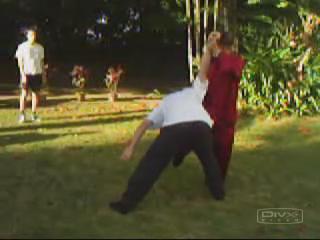
Shaolin Kungfu is famous for its “Seventy Two Chin-Na Techniques”. “Chin-na” literally means “hold-grip”. It refers to a special way of fighting where by holding and gripping opponents in some specialized ways, you disable them from further action but without hurting them unnecessarily.
Chin-na is a compassionate way of fighting. It is often mistaken to be the same as holds and locks. They are quite different. When you release your holds or locks, your opponent can continue to fight, but not in “chin na”.
Click here to enter.
Burning of the Shaolin Temple
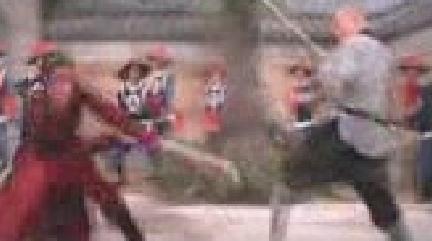
Some people when discussing kungfu and martial sports like wrestling and freestyle fighting seem to forget that kungfu is meant for life-death combat whereas the other arts are for sport. This video clip, taken from an old movie called “Shaolin Temple” produced by Shaw Brothers of Hong Kong, gives an idea of a kungfu fighting scenario.
The Qing Army had surrounded the temple. A military commander killed a Shaolin secular disciple with his double knives, and wounded a Shaolin monk who escaped a cordon of spears by leaping over them, only to find more soldiers outside. This scene is bloody, but is the least bloody amongst other scenes where there was much killing. Kungfu practitioners today, of course, do not practice to fight in such bloody scenarios, but it gives some sense of reality to those naﶥ to think that wrestling or grappling with a kungfu expert without the protection of safety rules could be safe.
Click here to enter.
Shaolin Combat of Hoong Hei Khoon in Movies

This video clip is taken from a very good old kungfu movie produced by Shaw Brothers of Hong Kong called “Hoong Hei Khoon” (“Hung Xi Guan”), which depicted the burning of the southern Shaolin Temple by the Qing Army. The great Shaolin master Hoong Hei Khoon (in dark dress) is fighting with a high-ranking Manchurian kungfu master.
Except for two patterns, the patterns used by Hoong Hei Khoon here are the same as those we use in our basic combat sequences in Shaolin Wahnam, and they are also almost in the same order. These patterns are "Hand Sweep", "Golden Dragon", "Precious Duck", "Poisonous Snake", "Throw Ball", "Yellow Bird", "Golden Star", "Black Tiger", "Golden Lotus", "Sweep Thousand Armies", "Dark Dragon", "White Tiger" and "Green Dragon".
The two exception patterns are "Throwing Balls Amidst Waves" (found in the "Kungfu Against Western Boxing" webpage) and "White Tiger Presents Claws" found in our "Five Animals" and "Tiger-Crane".
Click here to enter.
The Power of the Tiger-Claws

The internal force of a kungfu master can be very deadly like a lethal weapon. Hung Xi Guan (Hoong Hei Khoon in Cantonese pronunciation) and Lian Rui Xin (Lin Swee Hin) just escaped from the attack on and burning of the southern Shaolin Temple by the Qing Army, but they were intercepted by Qing agents on the way.
Hung Xi Guan killed two of them with his Tiger-Claws, using the Shaolin patterns “Fierce Tiger Descends Mountain” and “White Ape Catches Pig”, and the other two with a punch and a horizontal palm chop using the patterns “Black Tiger Steals Heart” and “Horizontal Sweeping of Thousand Armies”.
Click here to enter.
Taijiquan Combat of Yang Lu Chan in Movies
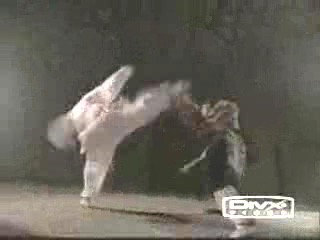
This video clip is taken from a very good kungfu movie recently produced by Jiao Yin Publication of China called “The Taiji Patriarch”, which depicts the life history of the First Patriach of Yang Style Taijiquan, the great master Yang Lu Chan. The Taijiquan master was fighting with a master from Cho-sen, which is the old name for Korea. Notice that Yang Lu Chan mainly retreated to avoid the fast and powerful kicks from his opponent.
The patterns used by Yang Lu Chan were “Jade Girl”, “Cloud Hands” (reversed movements), “Fierce Dragon”, “Low Stance”, “Single Whip”, “Playing the Lute”, “Thrust Punch”, “Double Punches”, “Closing”, “Push Boat”, “Carry Tiger” and “Ground Kick”. Except for the last pattern, all these patterns can be found in our Wahnam Taijiquan. (Nevertheless, “Ground Kick” is found in our Shaolin Kungfu as “Spiritual Monkey Tests Cave”.)
As in Wahnam Taijiquan too, Yang Lu Chan often used “Low Stance” to avoid the opponent's kicks. At the end of the combat, while the opponent were panting, Yang Lu Chan was calm and unruffled, which is also the case in Shaolin Wahnam.
There are, however, some differences in combat philosophy between that shown in the video clip and in Wahnam Taijiquan. We would not spin around the way it was shown at the beginning of the combat when responding to a series of round-house and reversed round-house kicks. We would also not block a round-house kick using “Jade Girl”. Rather, we would respond with “Low Stance”, or if we are skilful enough, spin into the opponent following his turning momentum so that we would land behind him. Moreover, in using “Low Stance” we would prefer a Reversed Bow-Arrow Stance instead of a frontal Horse-Riding Stance.
Click here to enter.
The Spirit of the Dragon
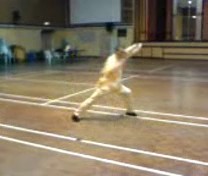
At an opportune time during the Special Shaolin Kungfu Course of September 2005 in Malaysia, Sifu Wong pointed out that to bring ones kungfu to a high level, he should manifest the spirit of the forms he performed.
Luckily this invaluable lesson was captured in video by Wei Foong who was present, so that it can be shared by other Shaolin Wahnam members and others who may be interested. This video clip shows Sifu Wong demonstrating the spirit of the Dragon. If one performs only the Dragon forms without its spirit, he would have missed the essence, not only for combat but also for benefiting our daily life.
Click here to enter.
The Snake, the Crane, the Tiger and the Leopard
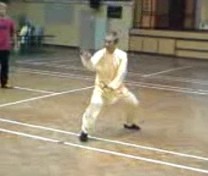
To attain a high level in kungfu we not only perform kungfu forms but also manifest their spirit. If there is no spirit in the forms, they become mechanical and are not alive. But the spirit must be appropriate to the form. Performing a crane form with a tiger spirit, for example, is inappropriate.
Nevertheless, similar movements may be manifested in different spirits, as shown in this video clip taken at the Special Shaolin Kungfu Course of September 2005 in Malaysia. The spirit of the crane, the snake, the tiger and the leopard are characteristically different.
But a particular spirit is not limited to a particular form. We may, for example, execute a leopard punch with internal force characteristic of a Tiger. Yet, at refined levels, the internal force of a Leopard is quite different from that of a Tiger, Crane, Snake or Dragon. .
Click here to enter.
The Spirit of the Monkey
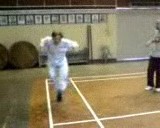
The Monkey has a special significance in Shaolin Wahnam. Sifu Wong's teacher, Sigung Ho Fatt Nam, specializes in the Shaolin Monkey Set. Besides other characteristics like agility, trickiness and internal force, the Monkey is also noted for its cheerfulness and inquisitiveness. In this video clip, Sifu Wong shows Chris how to manifest these two characteristics of the Monkey.
Click here to enter.
Dragon Form in Chi Flow
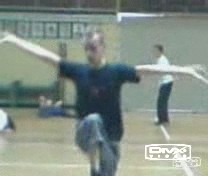
At the Special Shaolin Kungfu Course of September 2005 in Malaysia, after some combat application practice course participants went into spontaneous chi flow. Sifu Markus Kahila of Shaolin Wahnam Finland who specializes in the Dragon Form Set performed some very interesting movements spontaneously while in chi flow. These movements manifest the spirit and the form of the Dragon. The patterns are fast and powerful, and are moved by chi, not by muscular action.
Click here to enter.
All Britain Taijiquan Full Contact Sparring Competition 2006
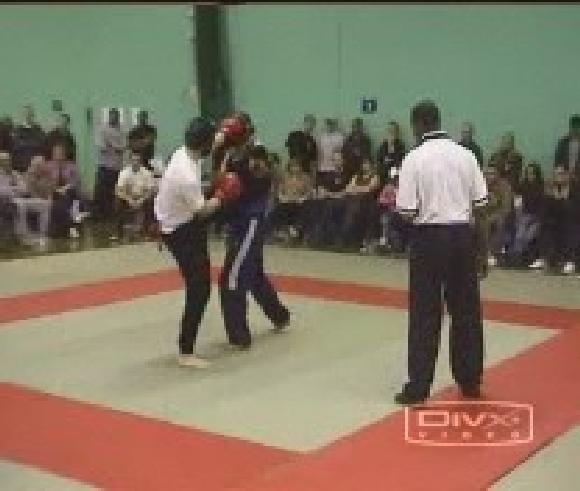
Many Taiji practitioners, especially in the West, do not realize that Taijiquan is a martial art. They perform Taijiquan external froms as a dance. The All Britain Taijiquan Full Contact Sparring Competition, we believe, is an attempt to correct this mis-conception.
The video clips here show typical bouts in the competition, where participants used Boxing and other martial techniques, except one who used Taijiquan stances and techniques. Can you tell which one of the competitors use Taijiquan instead of Boxing or other martial arts?
Click here to enter.
